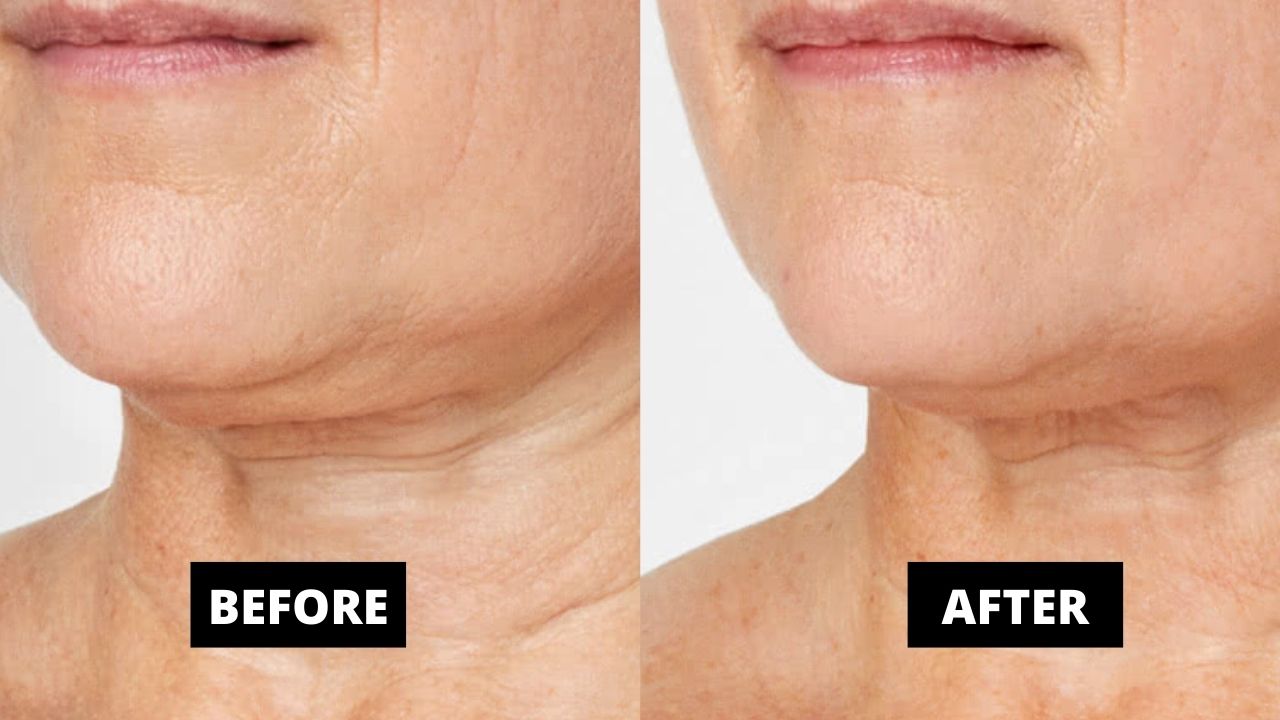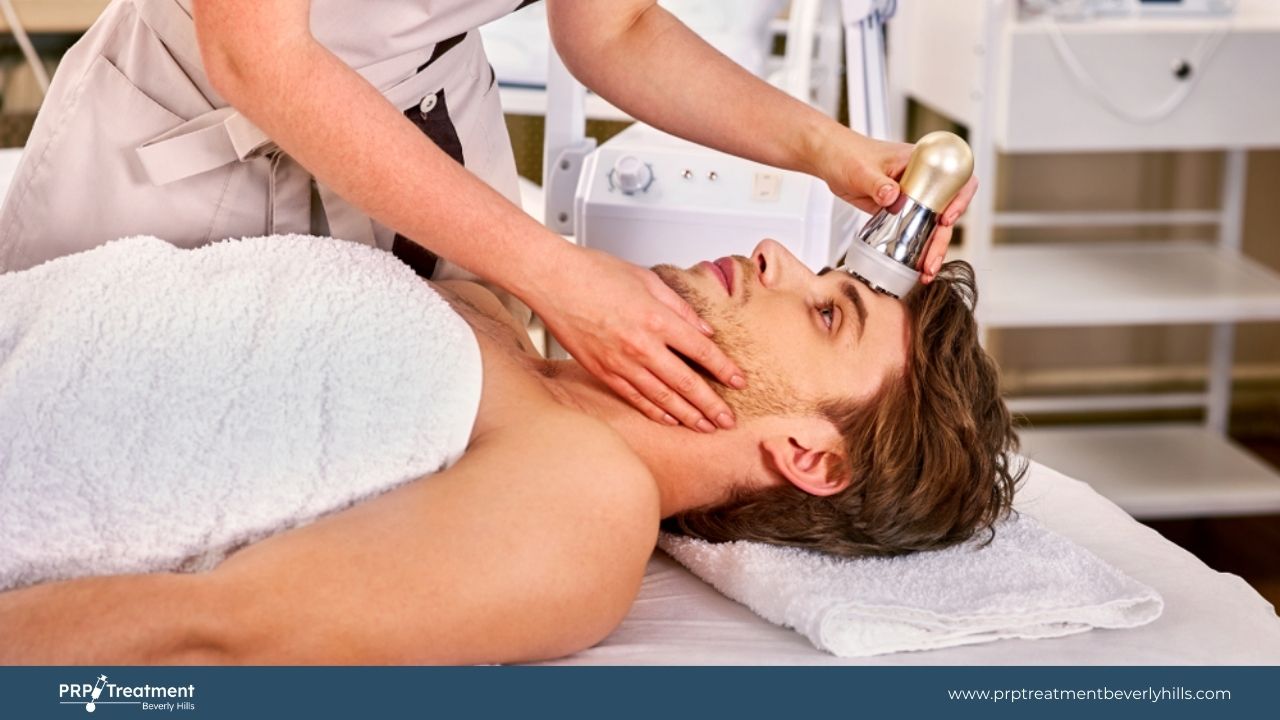Even the tiniest changes can dramatically affect your beauty and skincare routine.
Let’s take anti-aging and rejuvenation treatments. Two of the most effective procedures are PRP (platelet-rich plasma) and Ultherapy if you are dealing with any issues.
Ultherapy is a non-invasive process, while PRP is minimally invasive. Both require multi-sessions to see results, but none provide lifelong results like invasive procedures. Ultherapy and PRP are similar methods of rejuvenating the skin to erase wrinkles.
The two procedures also have different benefits and drawbacks, affecting your treatment choice if you’re considering both. Let’s take a closer look at how each one works, their differences, and who should decide which based on specific concerns about aging skin or hair loss!
Differences Between Ultherapy vs PRP
This chart will help you learn more about the differences in procedure, skin concerns, costs, and benefits to make the best decision.
| ULTHERAPY | PRP | |
| Procedure | Non-invasive- intense ultrasound wave | Mildly invasive- injections |
| Concerns treated | Sagging, wrinkles, skin laxity on the face, neck, décolleté, and underarms. | Wrinkles, scars, sun damage on the skin. It also treats hair loss and ortho and dental issues. |
| Side effects | Pain or swelling at the treated site, redness, bruising, or mild to moderate headaches. | Infection, itching, redness, or rashes on the injected site. In worst cases, blood clotting may appear. |
| Required session | Usually one session, but aged patients may require more sessions | 2-3 sessions |
| Longevity | 1-5 years | 6 months- 1-year |
Ultherapy vs PRP- Difference & Similarities
Ultherapy and PRP can help achieve facial rejuvenation. Still, there are some critical differences between the two methods that you should know about before committing to one or the other.
Read on to learn how these treatments compare to make the right choice for your skin and beauty.
Procedure
Ultherapy is FDA-approved for skin tightening of the neck and chest area. It uses ultrasound waves (rather than needles) to stimulate collagen production in the skin.
The outcome is expected to last up to two years or longer when combined with other treatments like lasers or injectables. It is a non-invasive treatment that uses intense ultrasound waves to lift and tighten skin on the face and neck by stimulating collagen production.
PRP stands for platelet-rich plasma and is a medical treatment that involves taking a small amount of your blood and spinning it in a machine to separate the platelets, which are rich in growth factors. Those platelets are injected into the skin to promote healing and new cell production.
Cost
PRP is an injectable treatment that contains your blood, plasma, and platelets. They are harvested from your body with a small needle and injected into the skin to rejuvenate it.
The procedure takes approximately 45 minutes and will cost $400-$1000 per session, depending on the clinic and the number of areas you want to treat.
Ultherapy, on the other hand, It’s typically done in fifteen-minute sessions. There are no incisions or downtime with Ultherapy, so you can resume your daily activities immediately.
The procedure takes approximately 15-90 minutes, depending on how many areas you want the procedure on, and costs $1,000-$3,000 per session.
Concerns Treated
As a cosmetic procedure, Ultherapy can help improve the appearance of sagging skin in the face and neck (known as the turkey neck), as well as sagging jawline and cheeks. It also helps reduce wrinkles by delivering a controlled amount of energy to tighten loose skin, making it appear firmer and more youthful.
PRP therapy, on the other hand, not only deals with skin concerns like acne, wrinkles, and stretch marks but also treats dental, scalp, and orthopedic issues. It is a natural treatment that uses one’s blood to stimulate healthy tissue growth.
Longevity
Ultherapy can last anywhere from a few months to a few years. It all depends on the individual’s skin, how they take care of themselves, and their age and lifestyle. Many other factors determine the results. In aging skin, ultherapy lasts less time than young skin. PRP lasts six months to a year and can be repeated as often as needed.

How both treatments can be repeated as many times as needed. With this being said, it is recommended that you follow up with your physician for an evaluation post-procedure.
Side-effects
There are few side effects to Ultherapy, but patients have reported discomfort in their neck and face during the treatment and a feeling of heaviness in the area that was treated.
Some also reported redness and swelling after treatment, which typically resolves within a week or two. However, unlike PRP treatments, Ultherapy does not require injections and can be performed on any part of the body for any skin type.
The risks of this procedure stem from a potential allergic reaction to the plasma injections and bruising or bleeding at the injection site. There have been cases where those who have undergone PRP treatments have experienced difficulty with their blood clotting function after treatment.
Other common side effects include rashes, redness, and itching in the injected place for a few days following the treatment sessions.
Who Should Avoid
Usually, both PRP and Ultherapy are considered safe cosmetic procedures.
However, suppose you are pregnant, a breastfeeding mom, having any intensive physical treatments like chemotherapy, or are on blood thinners such as Warfarin. In that case, none of the procedures may be your best option.
However, conclusive evidence is needed that one procedure will yield better results. It’s always better to speak with a professional. Call us to help you choose one!
FAQ
How is the procedure of PRP different from ultherapy?
PRP draws blood from the patient’s arm and then spins it in a centrifuge to isolate the platelets and plasma components. The cells are then injected into the desired area for treatment. Whereas ultherapy is done with intense, high-focused ultrasound energy on the affected area.
Is there anything better than ultherapy?
If you need anything better than ultherapy for fixing aging skin, you may want to go for laser and surgical options. Ultherapy is more expensive than PRP but less expensive than laser therapy and surgery. Since those are invasive, there’s more recovery time after the procedure, and requires more after-care.
Final Thought
Here’s what you need to know about Ultherapy vs PRP to help you decide. There are many things to consider when choosing between Ultherapy and PRP treatment options, and there’s no one right answer.
The best option will be to visit my chamber to get more detailed insights about the best option for you. I will analyze your condition and suggest proper planning.
You can also call us for expert suggestions on your facial rejuvenation treatment.



